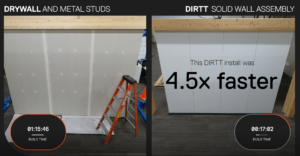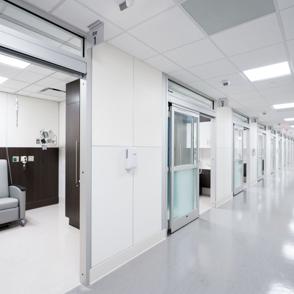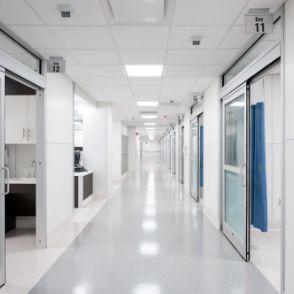Isolation rooms have become a critical part of modern healthcare infrastructure but not every isolation room is created consistently. At Architectural Wallsz, we specialise in modular isolation rooms, which offer clear advantages over standard isolation rooms – particularly in terms of time, cost-effectiveness, install speed and adaptability.
But how exactly do modular isolation rooms differ from traditional ones? Let’s explain.
When Are Isolation Rooms Needed?
Before exploring the differences between modular and traditional isolation rooms, it is worth briefly covering when isolation rooms are required. Hospitals rely on isolation rooms to prevent the spread of airborne infections and to protect vulnerable, immunocompromised patients.
Whether it’s during a pandemic like COVID-19, or routine care of patients undergoing treatments, like chemotherapy, isolation rooms ensure the safety and health of patients and staff.
Limitations of Standard Isolation Rooms
Standard isolation rooms typically involve conventional building methods, with construction done in a linear sequence, fully on-site. These rooms require substantial planning, cutting down of materials, first and second fix electrical and ventilation and onsite painting and decoration, often resulting in lengthy build timelines. They also commonly lead to significant disruption to healthcare operations due to noise, dust and labour requirements of on-site work.
Moreover, standard isolation rooms offer limited adaptability once constructed. If healthcare needs change or new medical guidelines are introduced, modifying these rooms can be expensive and logistically challenging. Costs can also escalate unpredictably due to extended timelines, unforeseen site issues or construction delays.
The Advantages of Modular Isolation Rooms – The AWallsz Approach
At Architectural Wallsz, we do things differently. Our modular isolation rooms are manufactured off-site under controlled conditions to reduce construction timelines.
The average time saved on a project using modular, multi-trade isolation rooms is around 30%. As boards are pre-cut and finished and all integrated services are pre-plumbed off site, installation is rapid, clean and durable. This helps to drastically reduce the disruption to hospital operations.
Because modular isolation rooms are constructed in a factory setting, costs are more predictable and controlled, eliminating the risk associated with on-site construction uncertainties. This approach ensures hospitals can accurately budget and avoid costly delays.
Adaptability is another advantage to keep in mind. Our modular rooms can quickly adjust to any evolving healthcare standards. If you require negative pressure to isolate infectious patients, positive pressure to protect immunocompromised individuals or a combined suite for simultaneous applications, these rooms can easily adapt. This flexibility is critical, especially during unexpected healthcare events or guideline changes.
Furthermore, the modular design allows for easy integration of the latest infection-control technologies, materials compliant with NHS and Public Health England guidelines and energy-efficient systems, which aligns with the NHS’s sustainability targets.

Key Differences at a Glance
| Feature | Standard Isolation Rooms | Modular Isolation Rooms (AWallsz) |
| Build Time | 100% (linear onsite sequencing) | 70% (integrated onsite and offsite sequencing) |
| Operational Disruption | High (extensive onsite work) | Minimal (offsite construction prefabrication) |
| Adaptability | Limited (hard to modify) | High (easily adaptable design) |
| Cost Control | Variable and unpredictable | Predictable and controlled |
| Compliance & Hygiene | Dependent on build quality | Built to standardised NHS compliance |
Why Modular Isolation Rooms Are the Future
As healthcare demands continue to change rapidly, modular isolation rooms offer the ideal solution for futureproofing hospital infrastructure. The ability to scale quickly, adapt to new clinical requirements and maintain rigorous infection-control standards positions modular isolation rooms as essential for modern hospital design.
Moreover, healthcare providers can ensure they’re prepared, not only for current challenges but for tomorrow’s as well.
Choosing modular isolation rooms from Architectural Wallsz means choosing faster delivery, predictable budgets, minimal disruption and the flexibility needed to stay ahead.
If you’re interested in learning more about our modular isolation rooms or how Architectural Wallsz can support your facility, get in touch with our team today.






Sorry, the comment form is closed at this time.